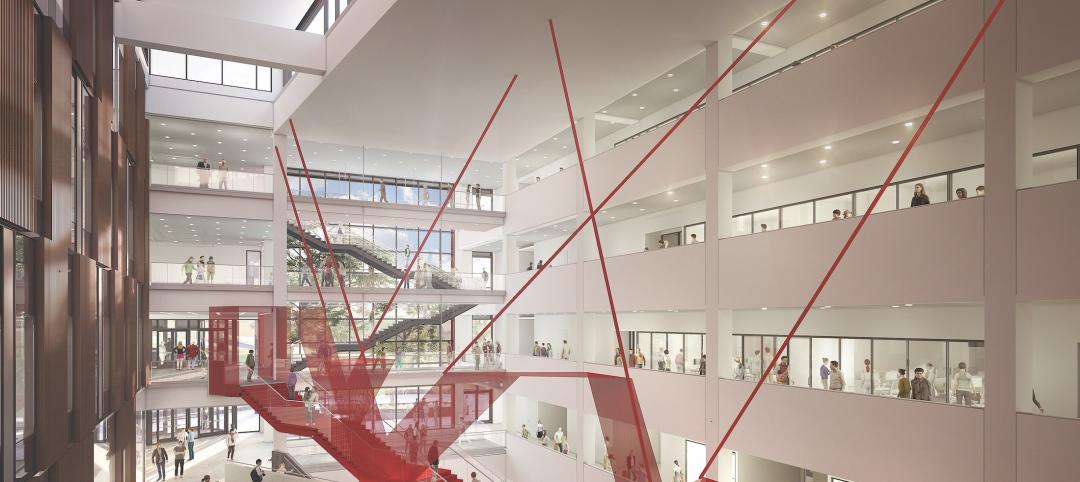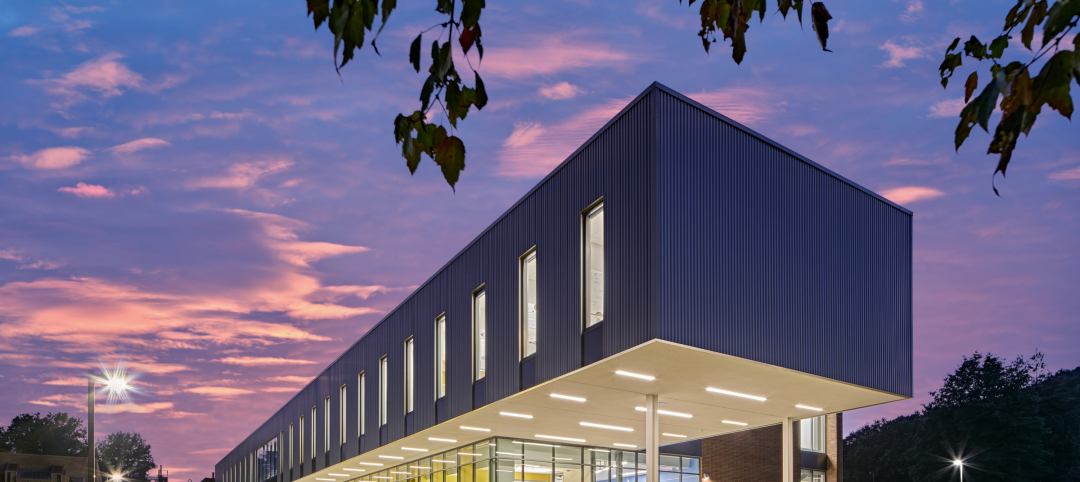HIGHER ED’S ‘EDIFICE COMPLEX’
Describing American colleges and universities as suffering from an “Edifice Complex,” in 2012 the New York Times reported that, “A decade-long binge to build academic buildings, dormitories and recreation facilities – some of them inordinately lavish to attract new students – has left colleges and universities saddled with large amounts of debt.”
One calculation at the time showed that the amount of campus space per student had nearly tripled since 1974.
It was clear then, as it is now, that this kind of growth is unsustainable. And yet despite deep cuts in state funding and flattening enrollment, this building spree has continued. In 2015, American colleges and universities went on to spend a record $11.5 billion on construction, creating 21 million SF of new space even as they faced a record $30 billion shortfall in deferred maintenance costs on existing facilities.
What’s driving campus growth is clear. As public funding for higher education has fallen and colleges and universities find themselves ever more dependent on tuition dollars, they’ve relied on debt financing to build the kinds of spaces, they hope, will attract and retain more students (State of Facilities in Higher Education).
With COVID-19 putting additional pressures on budgets and shutting down or restricting campus access, endless campus expansions are even less tenable. At the same time, the near universal adoption of remote learning in Spring 2020 has opened new pedagogical opportunities that may lessen the demand for more space – not just this year but into 2022 and beyond. Given this confluence of events, it’s likely that colleges’ appetite for new construction will be diminished for the foreseeable future.
A pivot from ever-expanding campuses towards more compact and better-utilized ones cannot resolve the underlying funding issue, but it can help control most colleges and universities’ second largest expense: their facilities. This transition will inevitably involve university architects, planners, and administrators reconsidering—and repurposing—their existing space. There is no one-size-fits-all strategy for managing a campus’s spatial needs. Your institution’s plan needs to reflect its character. However, there are some key considerations to account for when making decisions to ensure the resiliency and adaptability of your campus.

CONSIDERATIONS FOR SMART GROWTH
Mission. Your college or university’s mission should be at the heart of any space planning decisions that are made. What is the mission of the university? How do time and circumstance shape that mission? The answers to these questions should guide your planning process.
Space Typology. It’s important to understand the priority and characteristics of your campus spaces. Your campus likely requires a mix of research labs, learning spaces, libraries, student life spaces, and administrative offices. When evaluating how to develop, allocate, or repurpose campus spaces, you should consider the likelihood that the need for them will endure, the frequency of their use, their relative value to those who use them, and their ability to double as immersive communities.
Space Funding. What spaces are revenue generating? This concern shouldn’t diminish all others, but you also don’t want to interrupt a valuable funding stream. Most universities and colleges have a grant-tracking system in place. Correlating space data with your grant-tracking system can create a useful metric for evaluating a space’s effectiveness.
How are your rooms and buildings paid for? Are you using grants, funding from alumni, donors, etc.? While you may want to repurpose a space (and may be physically be able to do so), it’s important to understand whether it’s reserved or off-limits due to its funding source.
Flexibility, Adaptability, “Repurposeability.” For planning a resilient, robustly-used campus, two key spatial characteristics are flexibility and adaptability. Flexibility is a measure of a space’s capacity to support different uses over the course of a day or week, while adaptability is a longer-term measure of its ability to support fundamental use changes with minimal architectural intervention to the infrastructure. Taken together—and combined with other factors that affect space planning (funding sources, revenue-generation, space utilization data, etc.)—these factors determine what we call the “repurposeability” of a space.
Most colleges plan for flexibility. Some plan for adaptability. Few, if any, bring all of these factors together into a comprehensive analysis that provides a holistic view of an institution’s future space needs. But this type of analysis could help campuses avoid costly expansion or repurposing while existing spaces are underutilized.
DATA-DRIVEN PLANNING
But before you make these decisions, it’s imperative to determine how you can measure the use of existing spaces, and what data you have available—or can generate—in order to evaluate what kinds of spaces you actually need (vs. what you already have). Be resourceful! It may not be simple or centralized as you begin to gather this data, but you’d be surprised how much you already have at hand.
Once data is identified and analyzed, variables can be assigned to key questions and a space’s “repurposeability” can be rated. Spaces can then be plotted along a “repurposeability” spectrum. See example below.

As you begin to measure the “repurposeability” of your space, maintain focus on what factors are influencing the decisions within your college or university and what are the best, most cost-effective, and judicious actions that you can take to forward your institution’s mission.
PREPARING FOR THE FUTURE
While there’s no perfect formula or single answer that will work for all campuses, what has been made clear by COVID-19 is the need for spaces that can change to meet changing needs. Further, the reliance on data to make informed decisions is critical – and although you may have some segment of this data now in an ad-hoc collection of systems or spreadsheets, you should consider how to make that data usable for all your space planning needs. As your institution continues to repurpose existing spaces or build new ones, it’s also advisable to develop a plan for generating and storing space-related data in a centralized, easily accessible, and user-friendly format to simplify this process in the future.
If COVID-19 and its impacts on the spring and fall semesters of 2020 has taught us anything, it’s that it is impossible to predict future events. But data-driven planning that integrates the concept of “repurposeability” can help universities manage the financial, social, and pedagogical impacts of an unpredictable future.
Related Stories
Sponsored | BD+C University Course | Jan 17, 2024
Waterproofing deep foundations for new construction
This continuing education course, by Walter P Moore's Amos Chan, P.E., BECxP, CxA+BE, covers design considerations for below-grade waterproofing for new construction, the types of below-grade systems available, and specific concerns associated with waterproofing deep foundations.
University Buildings | Jan 15, 2024
The death of single-use university buildings
As institutions aim to improve the lives of their students and the spaces they inhabit, flexible university buildings may provide an all-in-one solution.
Designers | Jan 3, 2024
Designing better built environments for a neurodiverse world
For most of human history, design has mostly considered “typical users” who are fully able-bodied without clinical or emotional disabilities. The problem with this approach is that it offers a limited perspective on how space can positively or negatively influence someone based on their physical, mental, and sensory abilities.
University Buildings | Dec 8, 2023
Yale University breaks ground on nation's largest Living Building student housing complex
A groundbreaking on Oct. 11 kicked off a project aiming to construct the largest Living Building Challenge-certified residence on a university campus. The Living Village, a 45,000 sf home for Yale University Divinity School graduate students, “will make an ecological statement about the need to build in harmony with the natural world while training students to become ‘apostles of the environment’,” according to Bruner/Cott, which is leading the design team that includes Höweler + Yoon Architecture and Andropogon Associates.
Student Housing | Dec 5, 2023
October had fastest start ever for student housing preleasing
The student housing market for the upcoming 2024-2025 leasing season has started sooner and faster than ever.
University Buildings | Dec 5, 2023
The University of Cincinnati builds its largest classroom building to serve its largest college
The University of Cincinnati’s recently completed Clifton Court Hall unifies the school’s social science programs into a multidisciplinary research and education facility. The 185,400-sf structure is the university’s largest classroom building, serving its largest college, the College of Arts and Sciences.
Higher Education | Nov 21, 2023
UPitt at Bradford opens new Engineering & Information Technologies Building
The University of Pittsburgh at Bradford recently opened a new engineering and information technology building that adds urgently needed lab and instructional space to the campus.
Higher Education | Oct 19, 2023
Johns Hopkins transforms a former museum into a learning and research center
The 10-floor facility houses a new school for government and policy.
Esports Arenas | Oct 10, 2023
Modular esports arena attracts more than gamers
As the esports market continues to grow to unprecedented numbers, more facilities are being developed by universities and real estate firms each year.
Higher Education | Oct 10, 2023
Tracking the carbon footprint of higher education campuses in the era of online learning
With more effective use of their facilities, streamlining of administration, and thoughtful adoption of high-quality online learning, colleges and universities can raise enrollment by at least 30%, reducing their carbon footprint per student by 11% and lowering their cost per student by 15% with the same level of instruction and better student support.
















